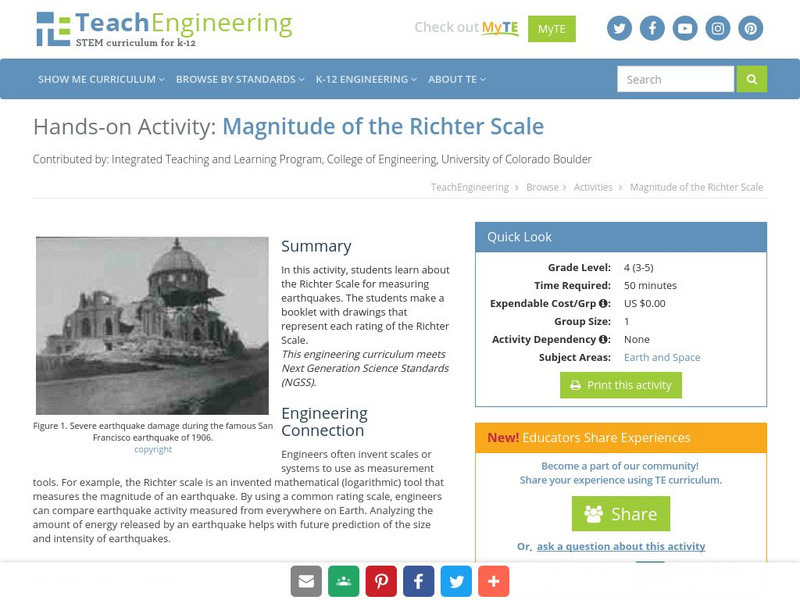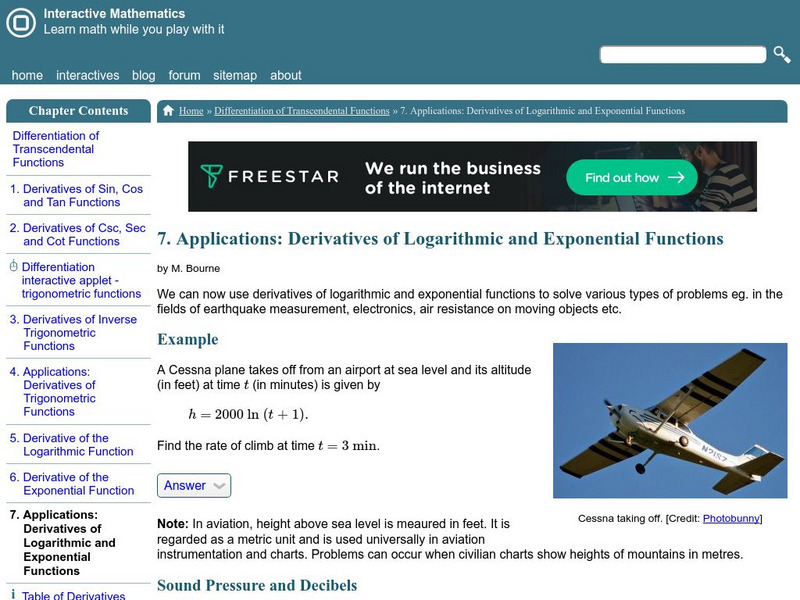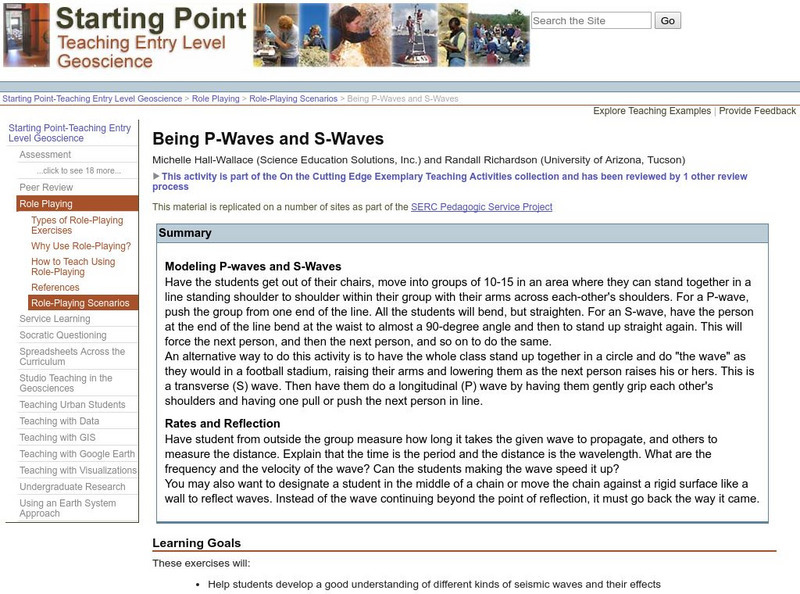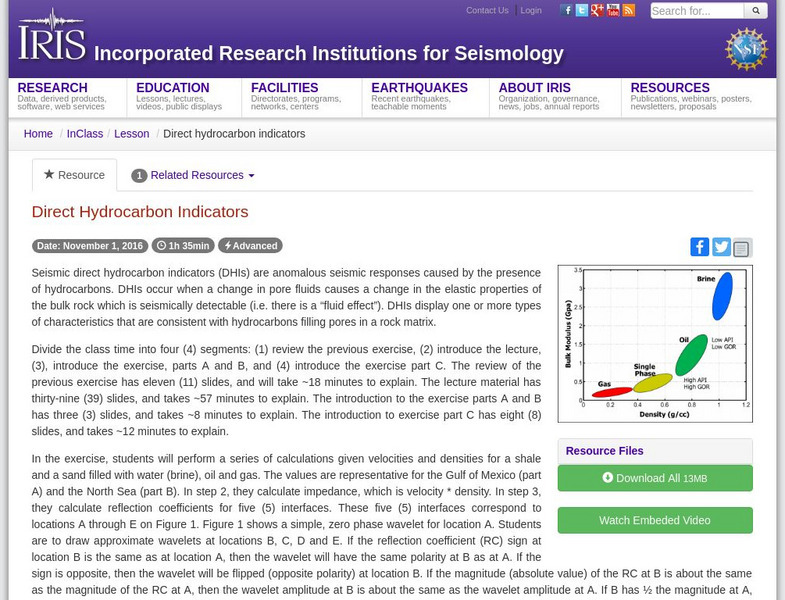Hi, what do you want to do?
TeachEngineering
Teach Engineering: Magnitude of the Richter Scale
In this activity, students will learn about the Richter Scale for measuring earthquakes. The students will make a booklet with drawings that represent each rating of the Richter Scale.
TryEngineering
Try Engineering: Shake It Up With Seismographs
During this lesson, students learn how seismographs work and how technology has impacted the world by helping save lives from earthquakes. They will work in teams to design, test, and evaluate the results of their own seismographs, then...
Incorporated Research Institutions for Seismology
Iris: How Hard Does the Ground Shake During a Quake?
This activity asks students to demonstrate how hard they think the ground shakes during an earthquake.
Science Buddies
Science Buddies: Make Your Own Seismograph
A seismograph is a tool scientists use to record earthquakes and measure their strength. In this activity you will build your own seismograph using simple materials.
PBS
Pbs Teachers: Seismometer
Build an instrument for measuring movement to learn about how scientists measure the Earth's movement with a seismometer.
Interactive Mathematics
Interactive Mathematics: Applications of Derivatives
The derivatives of logarithmic and exponential functions are used in problems dealing with earthquake measurement and air resistance. The problems allow students to see how these derivatives are applied with practice.
Science Struck
Science Struck: Richter Scale Explained
Explains what the Richter scale is and how the Richter formula is used to measure the magnitude of earthquakes. Includes a table of Richter values showing the changes in characteristics, impact, and frequency of tremors and earthquakes...
CK-12 Foundation
Ck 12: Plix: Richter Scale Exponents: Scientific Notation
[Free Registration/Login Required] Explore this interactive to see which earthquakes had the largest magnitude on the Richter Scale, then answer a challenge question.
Science Education Resource Center at Carleton College
Serc: Being P Waves and S Waves
In this lesson students develop a good understanding of different kinds of seismic waves and their effects.
Incorporated Research Institutions for Seismology
Iris: Direct Hydrocarbon Indicators
This video lecture and accompanying exercises allow students to define a DHI and how to identify them, describe how seismic data are used to determine reservoir rock and fluid properties, and list the processing and modeling steps used...
Incorporated Research Institutions for Seismology
Iris: How Does a Seismometer Work?
An overview of the basic components of a seismometer and physical science principles behind its operation.













